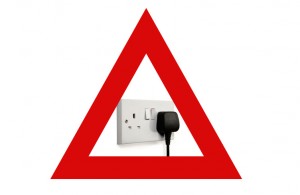We all know that water and electricity should not mix or the consequences could be deadly but how much do you actually know about bathroom safety?
Mixing water and electricity can be fatal because water is so efficient at carrying electricity – and wet skin lowers the body’s resistance, making an electric shock in the bathroom potentially more severe. Fortunately there are plenty of things you can do to help keep your family safe in the bathroom, including not allowing anyone to bring appliances into this room that need to be plugged into the main power supply, such as hairdryers, radios and heaters. It’s far safer to keep these items outside the bathroom rather than risk handling them with wet fingers or accidents occurring such as the appliances falling into the bath.
Heated towel rails and radiators
Really you should heat your bathroom via your central heating system as this is the safest option. If you do need to heat your bathroom using an electric heater, make sure it’s fixed away from the bath or shower and ideally operated using a pull-cord that is located outside the room.
Switches and sockets
Light switches are best kept outside the bathroom or at least away from the bath and/or shower to reduce the risk of wet fingers going near them. Enclosed lights on the ceiling are the best as there’s no way water can access them, and those that are open should be located far away from the bath or shower. Switches should go near the door, depending on your bathroom’s design, as this tends to be the farthest point from the bath, or outside – and go with a pull-cord switch for added safety. This way, even wet hands can use it safely, and you avoid the risk of falling as you can switch the light on before entering the room.
When it comes to sockets, you need to think carefully about where to put these and you should make sure they are a minimum of three meters from the bath or shower. Ideally you shouldn’t have any electrical sockets at all in the bathroom apart from a shaver unit, which should also be positioned away from the bath or shower.
Design
Consider the layout carefully to make sure people can move around the bathroom easily and there are minimum risks of tripping, slipping or causing accidents by having furniture and electrical sockets where they shouldn’t be.
The Electrical Safety Council has lots of advice on keeping your bathroom – and you – safe.

